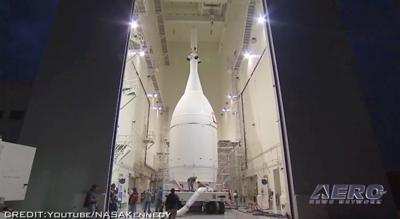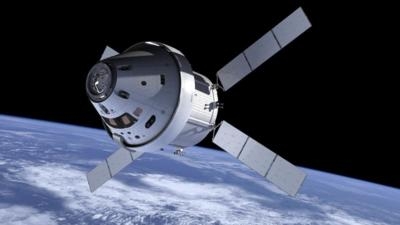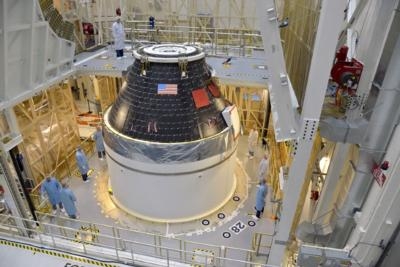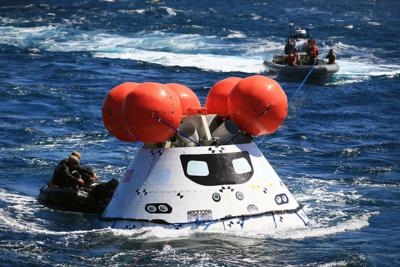Fri, Dec 05, 2014
Trespassing Boats, Gusty Winds and Recalcitrant Valves… Oh My!
BY ANN Space Correspondent, Wes Oleszewski -- From The Cape
With crowds resembling those that gathered at the Kennedy Space Center for high-profile Shuttle Launches lining the roads and shoreline, the first Orion EFT launch attempt was scrubbed – but not without a lot of drama.

The first delay in the count came when a boat strayed into range safety’s restricted area.
Once the count resumed, the next hold was triggered by a gust of wind at the pad.
Reportedly, a mission rule that was programmed into the countdown computer was set to detect wind, blown from a given direction at a given velocity. Such wind is a hazard due to the wide cross-section of the launch vehicle. Once the countdown was recycled and started again, a second wind violation took place.
The process was repeated and restarted a third time when another wind violation took place. Upon that the launch directors elected to mask the wind limitation in the computer and make a manual judgment on the wind.
While the final wind decision was being made an issue was discovered with the Liquid Hydrogen (LH2) valve in the center CBC. As that valve was being exercised, and trouble shooting was taking place, a similar issue was detected in the port side CBC. These valves control the in-flow of the LH2 and once closed, are left in that position for the flight. Additionally, they can be used as a drain for the LH2. Each is a ball-valve that is more than 10 inches in diameter and located at the base of each CBC.

The count was recycled but the launch team decided to scrub the launch for the day as the launch window was about to close and no positive fix was found.
As of this writing a second attempt at launching the EFT-1 will take place Friday morning at 7:05 a.m. Eastern time. If, however, a 48 hour delay is required a Saturday Lunch will be attempted also at 7:05 a.m.



More News
Pilot Also Reported That Due To A Fuel Leak, The Auxiliary Fuel Tanks Were Not Used On June 4, 2025, at 13:41 eastern daylight time, a Piper PA-23, N2109P, was substantially damage>[...]
Have A Story That NEEDS To Be Featured On Aero-News? Here’s How To Submit A Story To Our Team Some of the greatest new stories ANN has ever covered have been submitted by our>[...]
From 2023 (YouTube Edition): Reflections on War’s Collective Lessons and Cyclical Nature The exigencies of war ought be colorblind. Inane social-constructs the likes of racis>[...]
Aero Linx: Colorado Pilots Association (CPA) Colorado Pilots Association was incorporated as a Colorado Nonprofit Corporation in 1972. It is a statewide organization with over 700 >[...]
High Speed Taxiway A long radius taxiway designed and provided with lighting or marking to define the path of aircraft, traveling at high speed (up to 60 knots), from the runway ce>[...]
 NTSB Prelim: Piper PA-23
NTSB Prelim: Piper PA-23 ANN FAQ: Submit a News Story!
ANN FAQ: Submit a News Story! Classic Aero-TV: One Mans Vietnam
Classic Aero-TV: One Mans Vietnam ANN's Daily Aero-Linx (07.03.25)
ANN's Daily Aero-Linx (07.03.25) ANN's Daily Aero-Term (07.03.25): High Speed Taxiway
ANN's Daily Aero-Term (07.03.25): High Speed Taxiway







